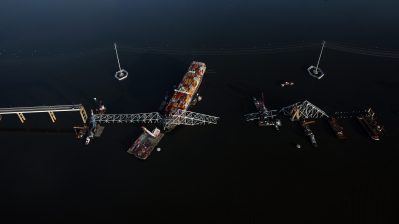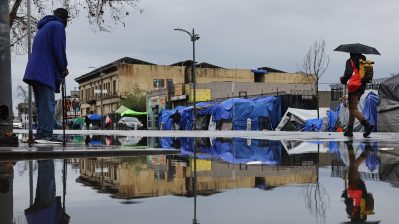TEXT OF COMMENTARY
KAI RYSSDAL: Among the many questions macro-economists like to sit around and chew on is this one: Why do some countries have economies that grow and others simply don’t. A commission set up in part by the World Bank has been trying to find the answer to that for the past couple of years. Today the group recommended, among many other things, heavy investment in infrastructure.
Commentator Robert Reich says that’s exactly what the United States ought to be doing, too.
ROBERT REICH: From the 1930s through the 1970s, we assumed that the biggest economic challenge was to avoid recession or depression, so we came to rely primarily on government spending to keep the pump primed and demand up. Richard Nixon declared in 1971: “We are all Keynesians now.” He was almost right.
But then came the late 1970s, and inflation became a bigger threat than recession. It was running at double digits when Fed chief Paul Volcker put a break on it by hiking interest rates so high he almost broke the economy, too. From then on we assumed monetary policy was more important than fiscal policy.
But the biggest challenge now, as it was before the ’70s, is lack of demand. Consumers don’t have enough money in their wallets to keep the economy growing. And the Fed is stuck. If it cuts interest rates much further, it risks pushing the dollar lower. But that will spur inflation as everything we buy from abroad costs more.
So we’ve got to go back to fiscal policy — big time. The tiny checks the Treasury just sent out are barely enough to pay our rising fuel bills. We need a stimulus package that’s truly up to the job of restoring aggregate demand.
And the best and easiest candidate is spending on the nation’s crumbling infrastructure. We’ve deferred billions of dollars of maintenance on bridges, sewers, water systems, levees and dams. That’s already cost the nation dearly.
Problem is, the public doesn’t trust the government to spend money on infrastructure wisely when earmarks go to “bridges to nowhere.”
So here’s the deal: The next president establishes a capital budget that lists infrastructure projects in priority order. No more earmarks. The capital budget will reflect the nation’s true infrastructure needs.
And the government would fund that capital budget the way capital budgets should be funded — through borrowing that assumes a realistic return to those capital investments, just like any smart business does. That way we keep the economy growing, create millions of jobs, and we get the infrastructure we need for the 21st century.
It’s a win-win-win.
RYSSDAL: Robert Reich teaches public policy at the University of California, Berkeley. His latest book is called “Supercapitalism.”
There’s a lot happening in the world. Through it all, Marketplace is here for you.
You rely on Marketplace to break down the world’s events and tell you how it affects you in a fact-based, approachable way. We rely on your financial support to keep making that possible.
Your donation today powers the independent journalism that you rely on. For just $5/month, you can help sustain Marketplace so we can keep reporting on the things that matter to you.


















